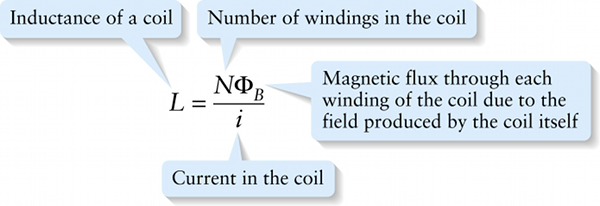Definition of inductance (21-13)
Question 1 of 4
Question
Magnetic flux through each winding of the coil due to the field produced by the coil itself
{"title":"Inductance of a coil","description":"Wrong","type":"incorrect","color":"#99CCFF","code":"[{\"shape\":\"poly\",\"coords\":\"82,133\"},{\"shape\":\"rect\",\"coords\":\"10,16,12,16\"},{\"shape\":\"poly\",\"coords\":\"144,22\"},{\"shape\":\"rect\",\"coords\":\"2,46,38,95\"}]"} {"title":"Number of windings in the coil","description":"Incorrect","type":"incorrect","color":"#ffcc00","code":"[{\"shape\":\"rect\",\"coords\":\"105,9,156,54\"}]"} {"title":"Magnetic flux through each winding of the coil due to the field produced by the coil itself","description":"Correct!","type":"correct","color":"#333300","code":"[{\"shape\":\"rect\",\"coords\":\"154,9,197,56\"}]"} {"title":"Current in the coil","description":"Incorrect","type":"incorrect","color":"#000080","code":"[{\"shape\":\"rect\",\"coords\":\"149,87,180,130\"}]"}Review
Consider a coil of N windings in which there is a current i. This current causes the coil to produce a magnetic field, and the flux of this field through each winding of the coil is ΦB. The total flux through all N windings is then NΦB. We define the inductance of the coil (symbol L) as the total flux divided by the current that produces it:
.

